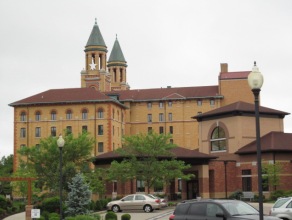Ohio Connections
Japan, Cincinnati, and the Arts: Etsu Inagaki Sugimoto
 |
Summer home in College Hill, Cincinnati where the Sugimotos lived |
In 1925, a Japanese woman living in Cincinnati published the story of her life and became a best-selling author. The woman’s name was Etsu Sugimoto; her book, A Daughter of the Samurai, shared Japan’s spiritual culture with American readers and offered an inside look at the life of Japanese women in soldiers’ families.
Etsuko Inagaki was born in Nagaoka, Echigo Province in 1872, the daughter of a high-ranking advisor to a powerful territorial lord, just a few years after the Meiji Restoration brought an end to Japan’s feudal system. Her father died when she was twelve; soon afterward, following the advice of her elder brother, she became engaged to his friend Matsunosuke Sugimoto—a merchant living in the United States whom she had never met. In the turbulent years following the Restoration, many young Japanese men immigrated to the United States in search of new opportunities; and many of these men sent back to Japan for brides. And so Etsu arrived in Cincinnati, Ohio in 1898, to meet and marry her husband, who was then running a shop called Nippon. During her time in Cincinnati, Etsu gave birth to the couple’s two daughters, Hinono and Chiyono.
The Sugimotos lived in College Hill, where they became acquainted with Cincinnati’s high society. They lived in the summer home of Mr. Obed Wilson, a businessman and writer who was a partner in the American Book Company. In this setting, Etsu found herself surrounded by an appreciation for literature and a curiosity about Japanese culture. Wilson’s niece Florence in particular became a friend to Etsu, providing encouragement and editorial support to her over the course of her writing career. By 1923, she had found the opportunity to publish a magazine serial on her childhood in Japan, which she would then assembled to create The Daughter of Samurai.
Obed Wilson would later donate land on which the Sugimotos lived to the Methodist Church to build a nursing home. Visitors to the College Hill site today will find the Twin Towers, still in operation to this day.